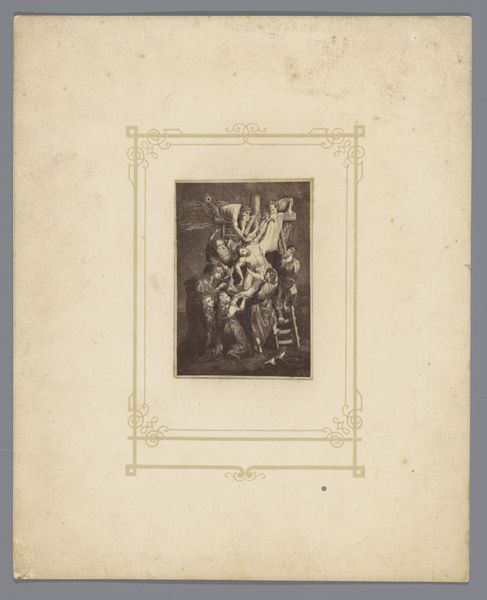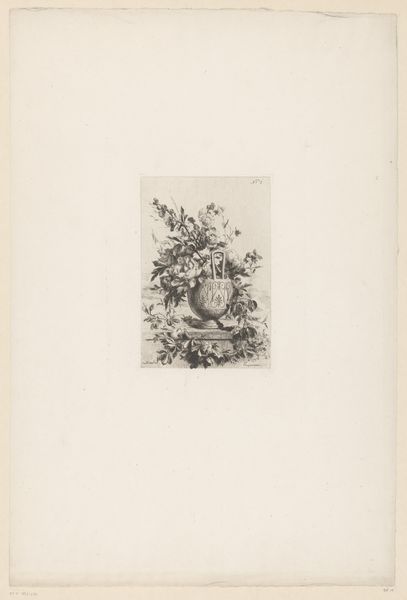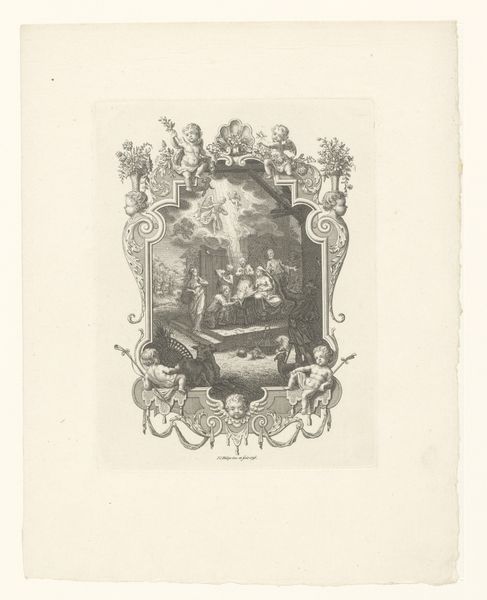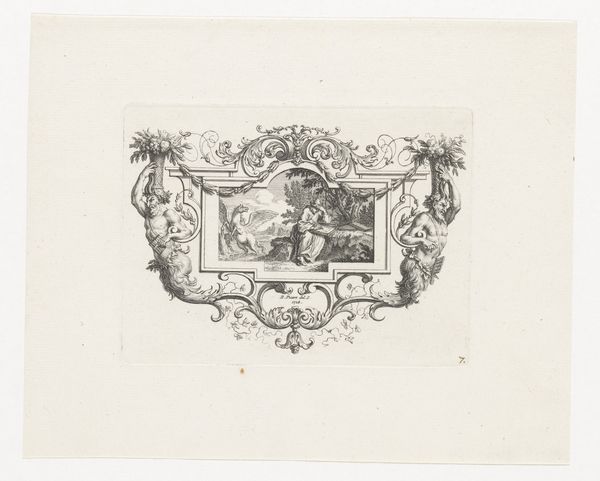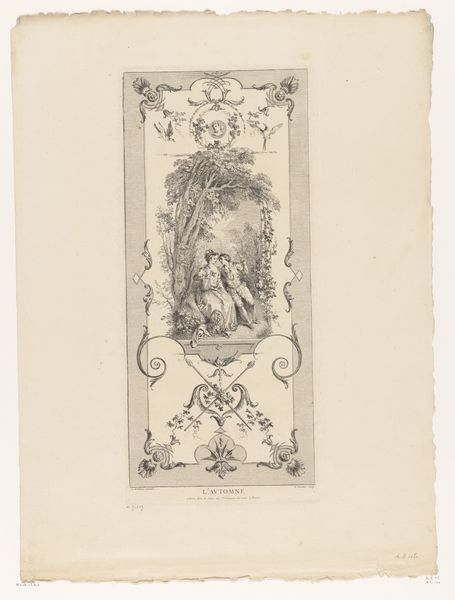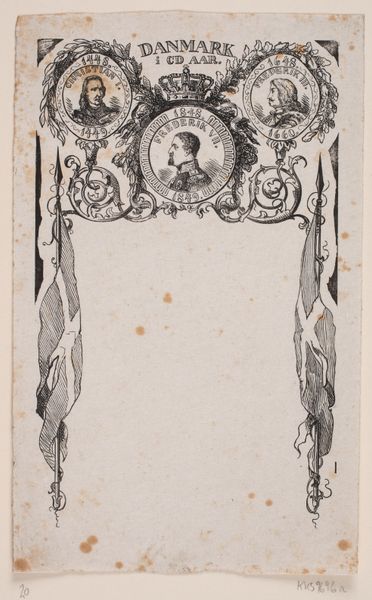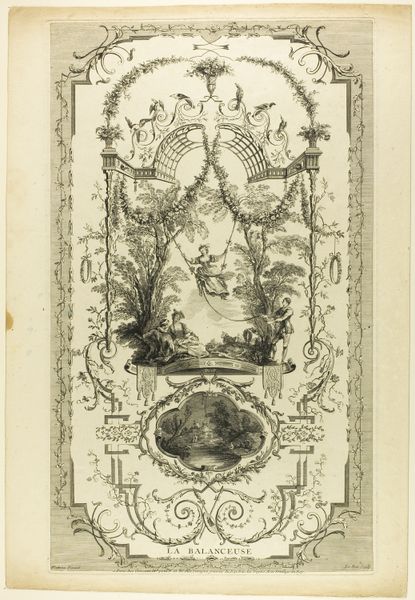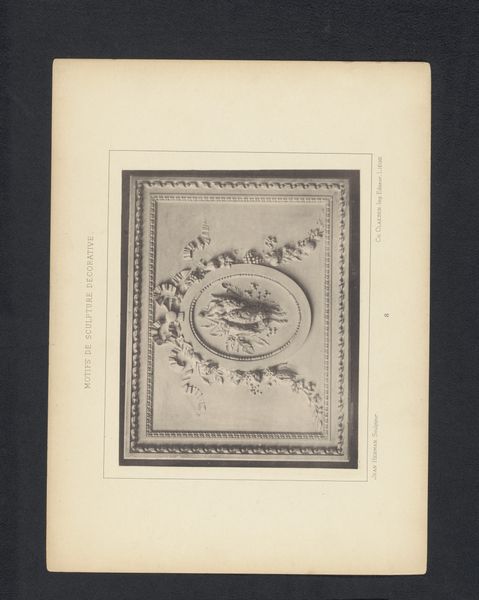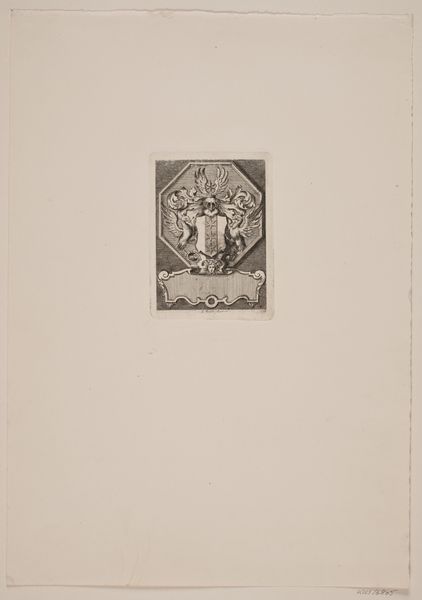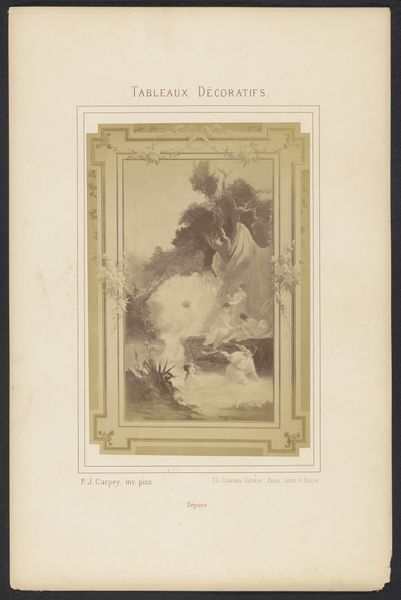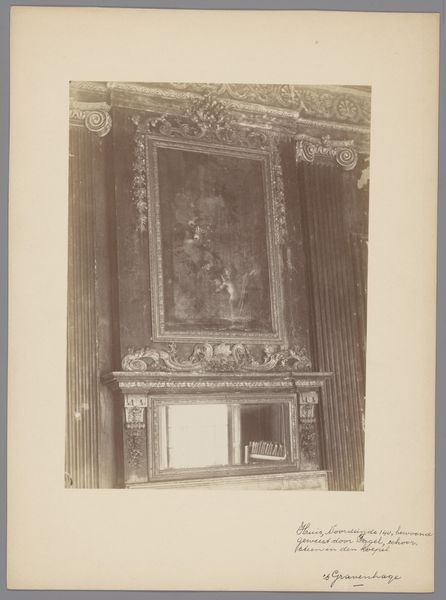
Dimensions: height 267 mm, width 194 mm
Copyright: Rijks Museum: Open Domain
Editor: This is “Beschilderd kamerscherm met putti en bloemen,” or "Painted fire screen with putti and flowers," made around 1875 to 1900 by J. Loroy. It’s quite charming; I’m struck by how this very domestic object depicts these ethereal, classical figures. How would you interpret this work? Curator: It's interesting to consider this screen within the context of domestic space and the late 19th century’s construction of femininity and leisure. While seemingly decorative, it’s presenting ideas of innocence through the putti, alongside notions of beauty suggested by the flowers. We have to ask: whose gaze is being prioritized here, and what values are being subtly reinforced by placing this idealized scene in the home? Editor: So it’s not just pretty; it's actually reinforcing certain societal expectations? Curator: Precisely. Think about the rise of the bourgeoisie and their obsession with curated domesticity. Art became a tool, often subtly, for projecting an image of respectability and virtue. Who possessed leisure time, who could afford such finery? Editor: Right, the putti and flowers romanticize and perhaps mask deeper societal structures. It makes you wonder what kind of conversations this screen “witnessed.” Curator: Exactly. Art doesn't exist in a vacuum. Examining the power dynamics inherent in its creation and reception allows us to read this seemingly innocent image as a cultural artifact embedded in its time. Editor: It definitely offers a lot more to think about than I initially expected! I’ll never look at decorative art the same way. Curator: Wonderful! That's the beauty of art history: constantly re-evaluating the stories we tell ourselves about the past and present.
Comments
No comments
Be the first to comment and join the conversation on the ultimate creative platform.
